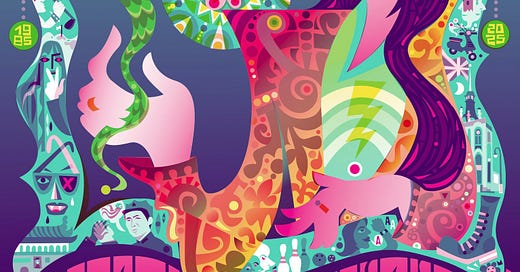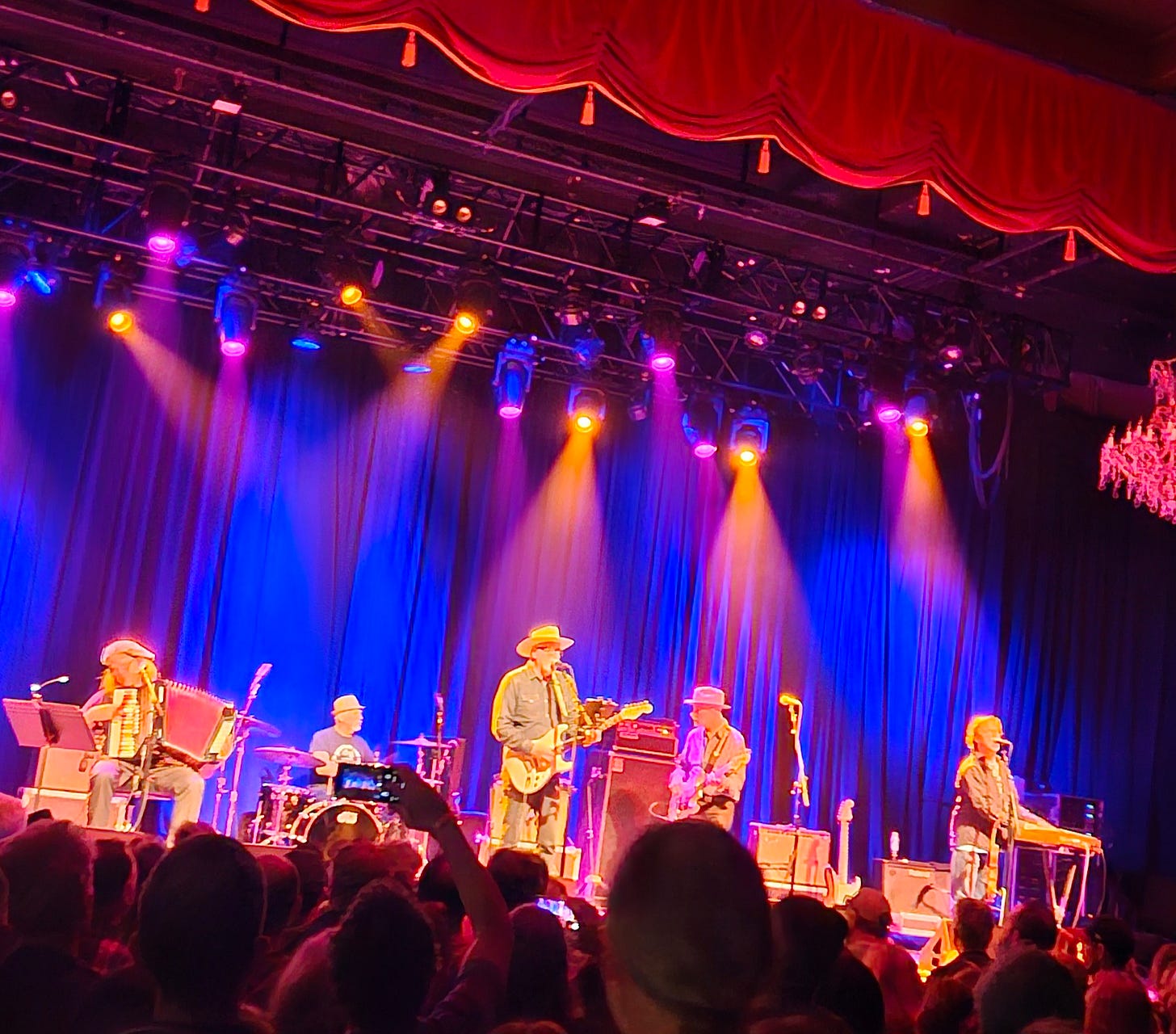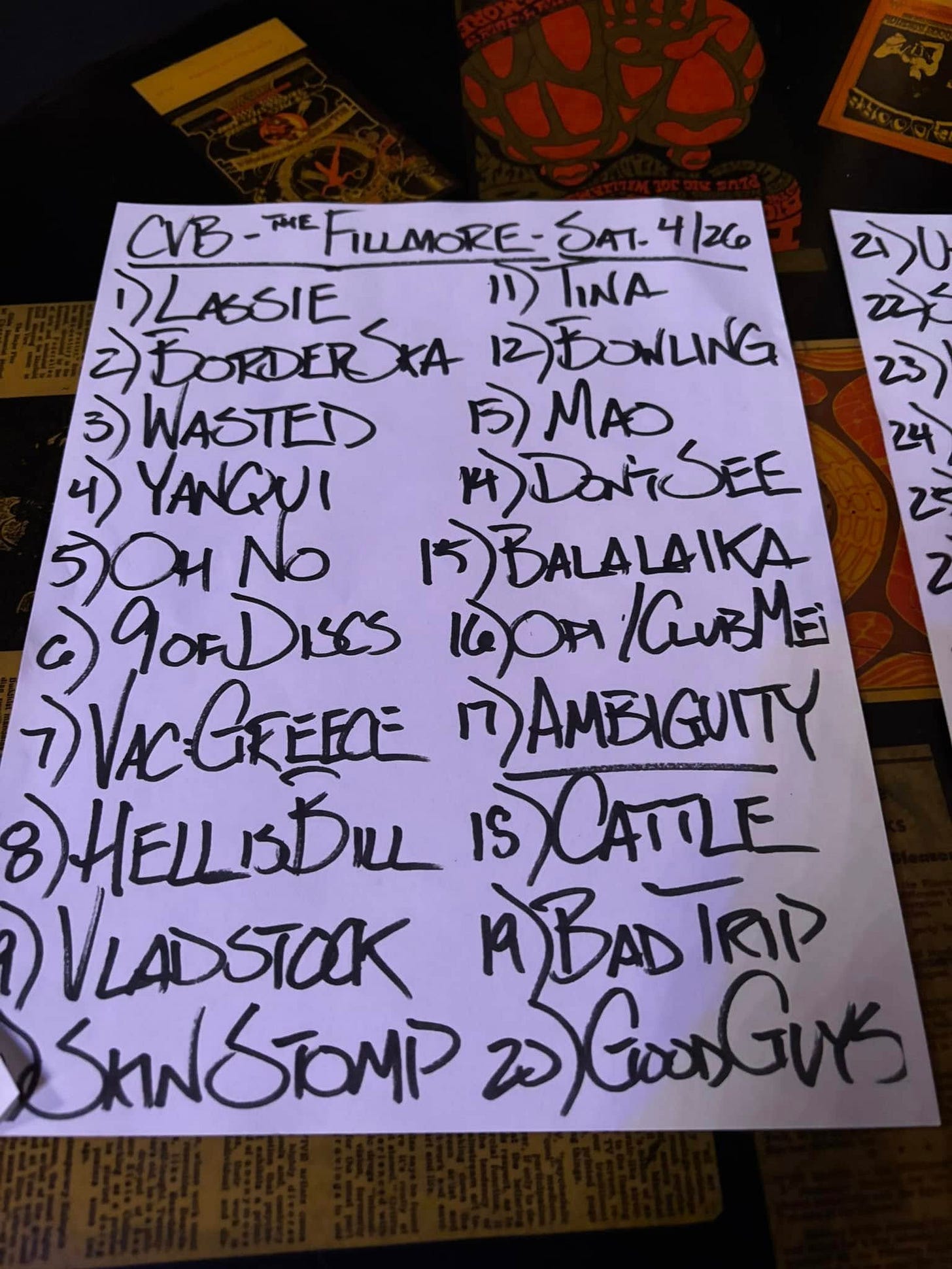One of the nicest things about San Francisco is that there is no freeway running right down the middle of it. In the 1960s, they proposed one, but city dwellers shut it down. It was going to run right through the middle of the Panhandle and Golden Gate Park, so it’s a very, very good thing they did, but it means that sometimes you find yourself tooling at a snail’s pace down a single street – Mission, or Dolores, or Divisidero, or Geary -- in order to get from one side of the city to the other, and when that happens to me, whatever the street it is may as well be rechristened Memory Lane.
That’s what happened to me the other night on my way to the Fillmore to see Camper Van Beethoven. Oh look! There’s the apartment my cousin Jeff lived in when he first moved to the city. Cheers! There’s Duboce Park, where I spent hundreds of hours pushing a swing with a baby in it! Brrrr…there’s the actual hospital I gave birth at. And then there are all the spaces and places that used to be nightclubs, all the venues wherein I had some of the very best times of my life.
“Memory Lane” was an apt title for Sunday night’s Fillmore show, anyway, for it was a night I was “going camping” as my friends and I used to call seeing Camper Van Beethoven, back in the day.
“Where you going tonight?” someone would say.
“To the I-beam,” we’d reply. “Going camping.”
And we went. To the Beam, to the Farm, to the Mab; to the Stone, to Slim’s, to the Paradise Lounge…wherever. There were a lot of clubs back then. Mostly they played to packed houses but one time I recall seeing them at some really crummy place in a strip mall in San Jose and actually waltzing with my friends to “Sad Lover’s Waltz,” because there was that much room on the dance floor. One step for girls, we sang along. And one step for boys, we added.
Step away.
I was wearing this really pretty silk rose pink dress from the 1940s that I got from some thrift store, and I remember thinking I will always remember how lovely this was.
And I do.
But back to the future. It horrifies me to say that the show I was on my way to was in celebration of the 40th Anniversary of the release of Telephone Free Landslide Victory, the oddly eclectic, sometimes hilarious and overly catchy record the band released in 1985 on their own Pitch a Tent label. If all you know from that record is the song “Take the Skinheads Bowling,” then you may have dismissed them as a novelty act, but that’s not what they either are or were, and I regret to inform you, you may have missed out.
Simply put, CVB weren’t just a band, they were a mindset. Going to see them perform was more like an activity you partook in, or rather, like a country that you visit, and like a country, they didn’t just play music, they enveloped you in their oeuvre. Being at their shows was like being rolled in a cozy blanket and then unrolling the blanket, and being tossed up in the air where you caught your breath at the top.
Something about the music created its own excitement. Some of it was ska. Some of it was middle eastern. You could catch the odd run of of notes and tempos evoking the folk idioms of Russian, Balkan, Irish, and other places, since the songs included fiddle, dobro, and accordion, and some of it was even sung in Xhosa.
In fact, that particular song, “Tina,” by the Tokens, is very pre-Camper: The Tokens were four white guys (including Neil Sedaka) who turned to African music for inspiration. Their biggest hit, “The Lion Sleeps Tonight” has always forced people to question whether they appropriating it, appreciating it, or exploiting it, but that question is already answered in the work of Camper Van Beethoven by the amazing spin they give both it and everything else they play. By layering all that multi-cultural jazzbo stuff on top of what is essentially three chord punk rock, it screams out its origins. It’s like there’s a giant blinking sign hovering over them that says,
Also, because they are so damn musicianly, it’s easy to forget that at bottom, they are also just a big loud band with a wall of guitars.
Of course, at the time we just thought it was normal for music that good to emerge from whence it did, but it wasn’t normal, it was way better than we could have expected. What we were, and who we were, and where we were didn’t really match that kind of genius. As for who they were? They were just a bunch of kids who learned to play their instruments in the multipurpose rooms of the public schools of California in the late 1970s, and who went to camp with hippie counselors who taught them to sing Kumbayaa.
In other words, it me, and I’ve always thought I had a particularly un-special childhood. And yet, between 1985 and 1989 this band of people just like me released 5 records that was like an audio-dump of musical styles, genres, and instrumentality, creating a profusion of music that defied the scene its origin story.
To be clear: Camper Van Beethoven’s music is the opposite of indigenous, and it sure isn’t the blues, but the scene it came out of – my scene, in the late 1980s – functioned like a honky-tonk in the deep south, a place where we hid from Reagan-era values and atrocities in our safe little bubble of rock. And this is why the Fillmore on Sunday was full of everyone I know or met in the interim 40 years. Literally, everyone, even the people who have long since moved away. Being at the front of the stage felt like that scene in “Barry” when he meets everyone he’s ever killed or interacted with on the beach, only none of us were dead, only a lot older, with the ladies’ wearing glasses and the men all in hats to cover up their bald spots, band members included.
At the Fillmore on Sunday night, they started their set by playing Telephone Free Landslide Victory in entirety, before adding about 90-minutes’ worth more songs from the next four records. In the end, I could think of so many songs I’d have liked to heard in addition: “Never Go Back,” “One of the Days” (I know they played it the night before), “Life Is Grand,” “Joe Stalin’s Cadillac,” “O Death” (I love their version) and “My Path Belated” and that’s just for starters, since they played nothing from “New Roman Times (2002), an album which I also revere.
Anyway, the older I get the more difficult I think it is to capture what music is like, especially since all of us there were reliving our own memories, so what is it to you? All I can say is it was a set that built up, built and built, and somewhere in the middle of it, the band and the crowd got into the same groove, nodding and singing and stomping along, and the only thing I can really liken the experience to is the kind of sound bath with Tibetan bowls that I sometimes attend to clear my head. Outside the club, the Waymos circled like the metal ghosts they are, ready to whisk us into brutal present. It was nice to know that we could find respite, just by going camping.








